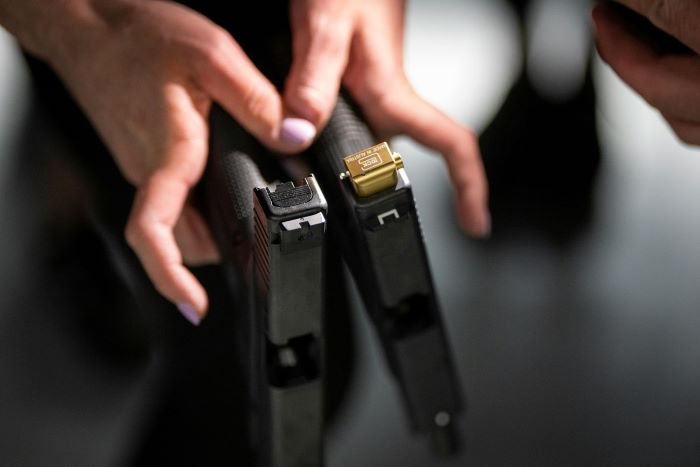In the realm of firearms, pistols have always been a symbol of personal defense and a tool for law enforcement and military applications. However, with advancements in technology and materials science, the modern pistol is not just a means of protection; it’s a marvel of design and high-tech engineering. Here we delve into the innovative world of pistols, where design meets advanced technology, exploring how these advancements have revolutionized the firearm industry and what the future holds.
Evolution of Pistol Design
The journey of the pistol from a rudimentary hand cannon to a sophisticated piece of machinery is a testament to human ingenuity. Early pistols were simple, single-shot devices with a flintlock mechanism, evolving into revolvers in the 19th century, which allowed multiple shots before reloading. The 20th century saw the rise of semi-automatic pistols, which used the energy of one shot to reload the next, a fundamental change that significantly improved firing rate and capacity.
Today, the evolution continues with pistols that are lighter, more accurate, and more reliable than ever before, thanks to innovative materials like polymer frames and advanced metallurgy. These materials not only reduce the weight of the firearm, making it easier to handle and carry, but also resist corrosion and withstand extreme temperatures, ensuring durability and longevity. A prime example of such innovation in design and technology is the Shadow Systems MR920 Pistols, which embody the modern advancements in firearm engineering.
Integration of Advanced Technologies
The integration of technology into pistol design has been a game-changer. Smart guns, equipped with biometric sensors or RFID (Radio-Frequency Identification) technology, ensure that the firearm can only be fired by authorized users, enhancing safety and security. These technologies have the potential to reduce accidental shootings and unauthorized access, addressing some of the most pressing concerns in gun safety.
Optics have also seen significant advancements, with the integration of red dot sights and holographic sights into pistols. These aiming aids improve accuracy and target acquisition speed, benefiting both novice shooters and seasoned professionals. Furthermore, the development of modular pistols, which allow for easy customization and caliber changes, provides versatility and adaptability to various shooting scenarios and user preferences.
The Role of Computer-Aided Design and Manufacturing
The marriage of design and technology in pistols is largely facilitated by the use of Computer-Aided Design (CAD) and Computer-Aided Manufacturing (CAM). These tools allow for the precise engineering of firearm components, optimizing them for performance, ergonomics, and aesthetics. CAD and CAM enable the rapid prototyping of new designs, testing, and refinement, accelerating the development process and bringing innovative products to market faster.
Manufacturers are also exploring the use of 3D printing to create firearm components, offering unprecedented flexibility in design and the potential for personalized customization. While this technology is still in its infancy in the firearms industry, it represents a frontier of design and manufacturing that could redefine the future of pistol production.
Environmental and Ethical Considerations
As pistols evolve, manufacturers and designers face the challenge of balancing innovation with environmental and ethical considerations. The use of non-toxic materials and the development of lead-free ammunition are steps towards more environmentally friendly firearms. Additionally, the integration of safety technologies reflects a commitment to ethical responsibility, aiming to prevent accidents and unauthorized use.
The Future of Pistols
The future of pistols lies in the continued integration of technology and design, with a focus on improving performance, safety, and user experience. Innovations in materials science may lead to even lighter and more durable firearms, while advances in electronics could offer enhanced smart gun features, such as GPS tracking or remote disabling for lost or stolen weapons. Virtual reality and augmented reality could also play a role in training, allowing shooters to practice in a simulated, safe environment.
Moreover, as societal attitudes towards guns continue to evolve, the industry will need to navigate the complexities of regulation, safety, and public perception. The future of pistols will not only be shaped by technological advancements but also by the broader context in which these firearms exist.
Conclusion:
Pistols marrying design with advanced technology represent a fascinating convergence of art and engineering, tradition and innovation. The advancements in materials, manufacturing processes, and integrated technologies have not only enhanced the functionality and safety of these firearms but also transformed them into sophisticated tools that reflect the cutting edge of modern technology. As we look to the future, it’s clear that the evolution of pistols will continue to be driven by a commitment to excellence in design and an unwavering pursuit of technological breakthroughs.

